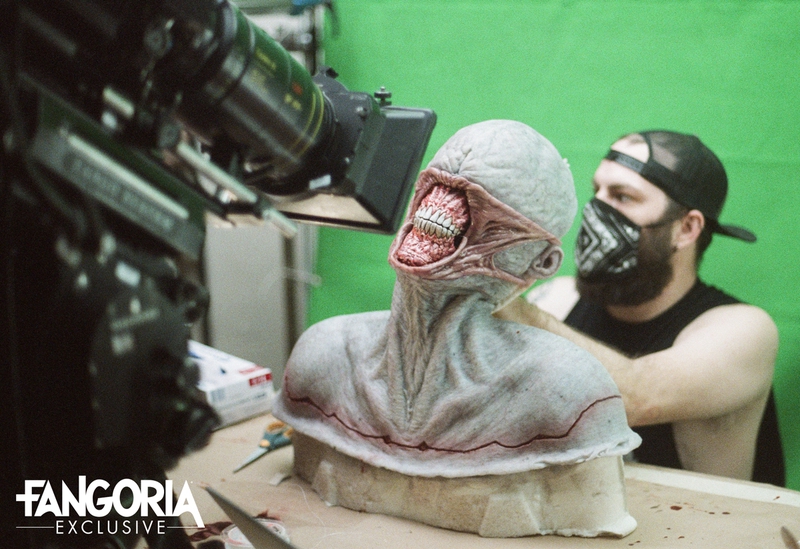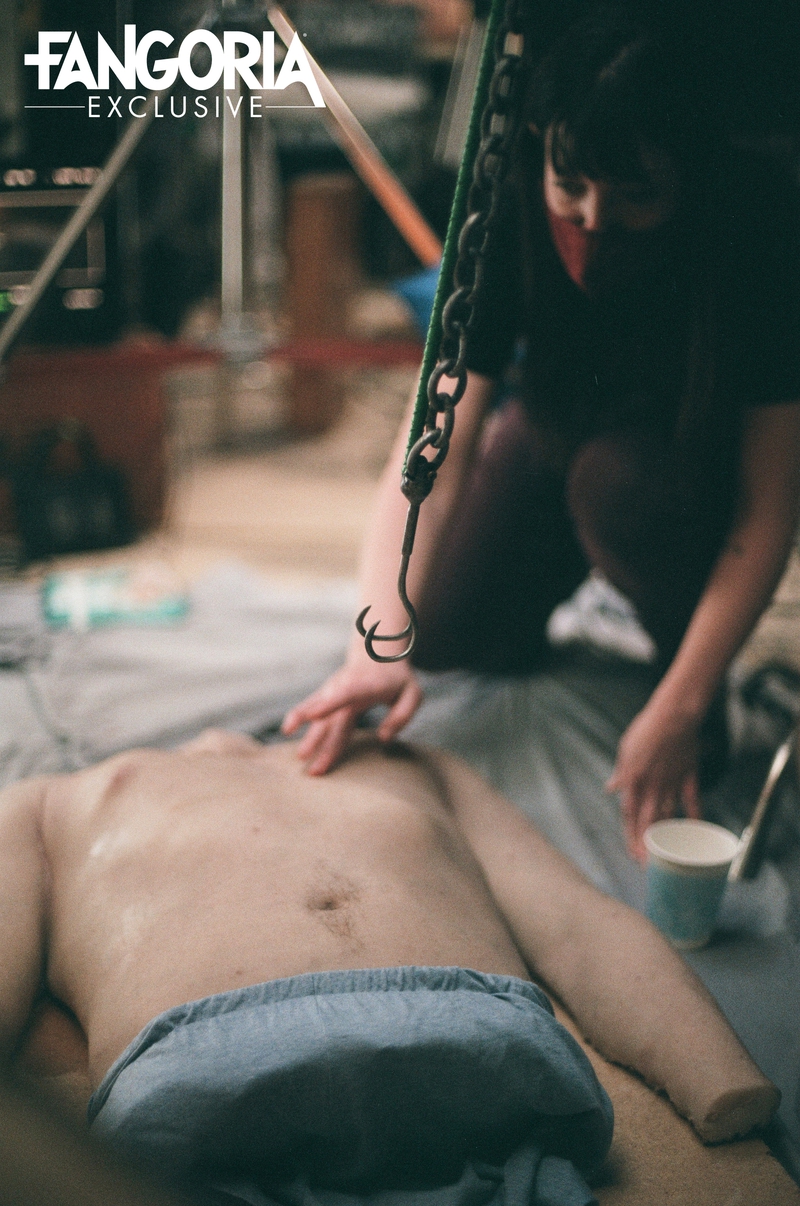I cut my teeth on Hellraiser. It's been a little over a year since I first was invited to assist FX artists Josh and Sierra Russell on the biggest project they'd ever tackled, and even as I'm writing this now, the tedious grind of nailing down all the specific minutiae has yet to allow for a real tangible picture lock. During that span of time, I witnessed two great minds bring a dream to life – or rather, a nightmare – Clive Barker's original vision updated by way of director David Bruckner's brilliance.
Even just mostly sitting on the sidelines, earning my chops spending hours upon hours upon hours cleaning clay out of molds with D-Limonene and sculpting tools and attending to the gang's every need, I felt the palpable magic in the air, the alchemy of collective effervescence casting its spell on me.
From the initial Pinhead sketches to the sculpting of Chatterer's suit, all the way down to pick up shots, my hungry eyes made mental notes of proper shop techniques. Things like how to make blood, how heat affects the cure time of your chemicals, why bleeder holes are necessary when casting a silicone creature suit out of a fiberglass mold, and how if you make it a point to consistently tint part B of your mixing materials, you don't even really need to label your cups. How important it is when lifecasting an actor to keep communication going throughout the process because it's a person, not a prop, how you decide where to make your cut on a brush up mold, and how the way to be the best at tapping fiberglass is to be the fastest.
Through all of this, I bore witness to just a hint of what joy and sacrifice must have come from the Russell captains as they steered a massive ship loaded to the brim with monsters and their makers. Screamfest Award Winners. FilmQuest Award Winners. FANGORIA Chainsaw Award Winners. Myriad successful projects and countless trophies later, it came as no surprise that when it was Bruckner's turn to put a brand new spin on Barker's classic tale of sex and gore, he went with the team he knew he could trust the most to bring his wicked vision to life. It was wild seeing and hearing firsthand how the duo pulled off such a massive feat, and I'm thrilled to share these specific and very special Hellraiser gag breakdowns from the ringleader himself, FX master Josh Russell.
KC: How did you execute the chest rebuilding sequence?
JR: There was an effect that was a callback to the original where Frank's body reforms, arguably the coolest FX sequence in the film. We needed a character's chest cavity to rebuild a massive gaping hole, and I was determined to do it practically, though the team had already consigned it to VFX. We hired Dan Rebert for that effect exclusively, and we worked out a three-stage set of prosthetic chests full of bladders and tubes that, when edited together, show all the internal organs rebuild from nothing — bones and muscle tissue reconnecting, then finally the skin closing up.

When I pitched it to Dave and showed him Dan's work, he went nuts! "I didn't even think this shit was possible, man! People are going to lose their minds!" We had a few wins like that where we took on an effect that was intended to be digital, and Dave backed us up all the way because we all felt you just aren't doing Hellraiser justice with a bunch of digital gore. And it's not like we were at war with the VFX department. We were teammates. They had their hands full with environments and composites, they were happy for us to take on as much as we wanted. Everything you see in the movie is at least based around something physical, sometimes augmented in VFX, which we all agreed is the best use of both.

How did you make Chatterer chatter?
It seemed to me that we could make a simple rotating mechanism that pulled cables to open his jaw. That way we'd be able to remote control the speed and vary it as needed rather than the suit actor getting worn out wearing a makeup and working their jaw for hours. I mocked it up with an RC car motor on a plastic skull, and it worked. There were problems getting the right system that could fight against his silicone mask, but it eventually worked out and looks great.
What was the inspiration behind the needle in the throat scene? How did you make it work?
The idea came up during editing. It seemed the scene needed another layer to amp up the horror, so we talked it through with Dave and thought back to Southbound where we shot some gags from the interior of the body. In this case, it ended up being the moment that sells the pain of the scene.

How did you pull off the hooks and chains plunging through the skin scene?
We had a good old-fashioned fake chest with cavities built into it under the skin filled with blood and sinew. The props dept built a set of sharpened hooks welded to a piece of rebar we used to punch through the scored skin like a spear. It turned into some of the goriest hook bites I've seen in any of the films.
There's a brand new iteration of the puzzle box in this movie. How does that relate to your work with the cenobites? How are the pieces of the box incorporated into the cenobites themselves, and how did you work the mechanisms to create the effects seen on screen?
All the Cenobites had what we called "Leviathan Tech" built into their bodies. Those needed to share design elements with the box - the hybrid mechanical and hieroglyphic style. So we had Jeremy Spence design them on the computer, 3D printed them, got them gold plated, and attached them to the suits. They were all decorative, but some were functional pieces that served the script. A fun one to play with was a spooling mechanism that bound a cenobite's arms to its chest with wires, then eventually activates to unleash them. So we built it kind of like a slot machine with a rod and spring through the middle that the wires would wrap around, then spin in different directions when it was releasing the wires. It's a quick moment on screen, but it adds a lot to the character.
Check out more Hellraiser behind-the-scenes shots from the shop in our latest issue, now on newsstands and in our online store. Hellraiser is now streaming on Hulu.






